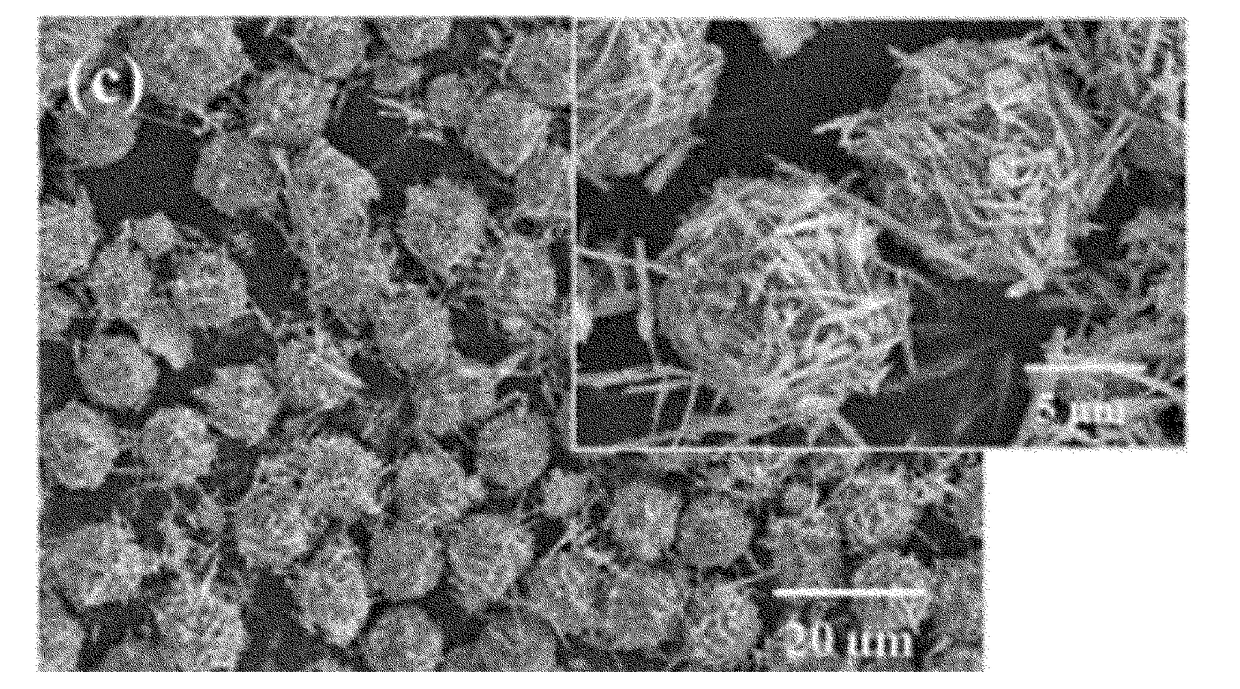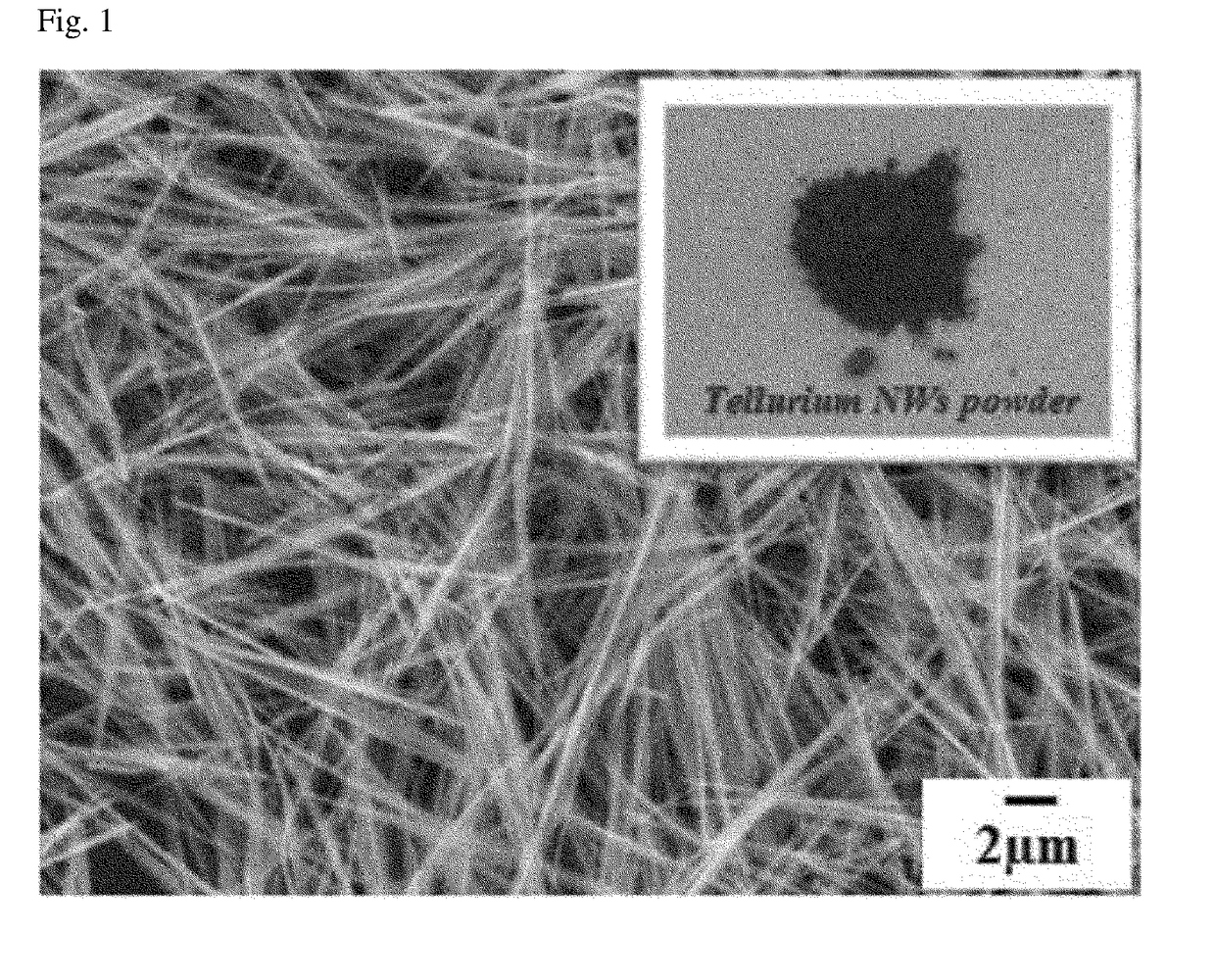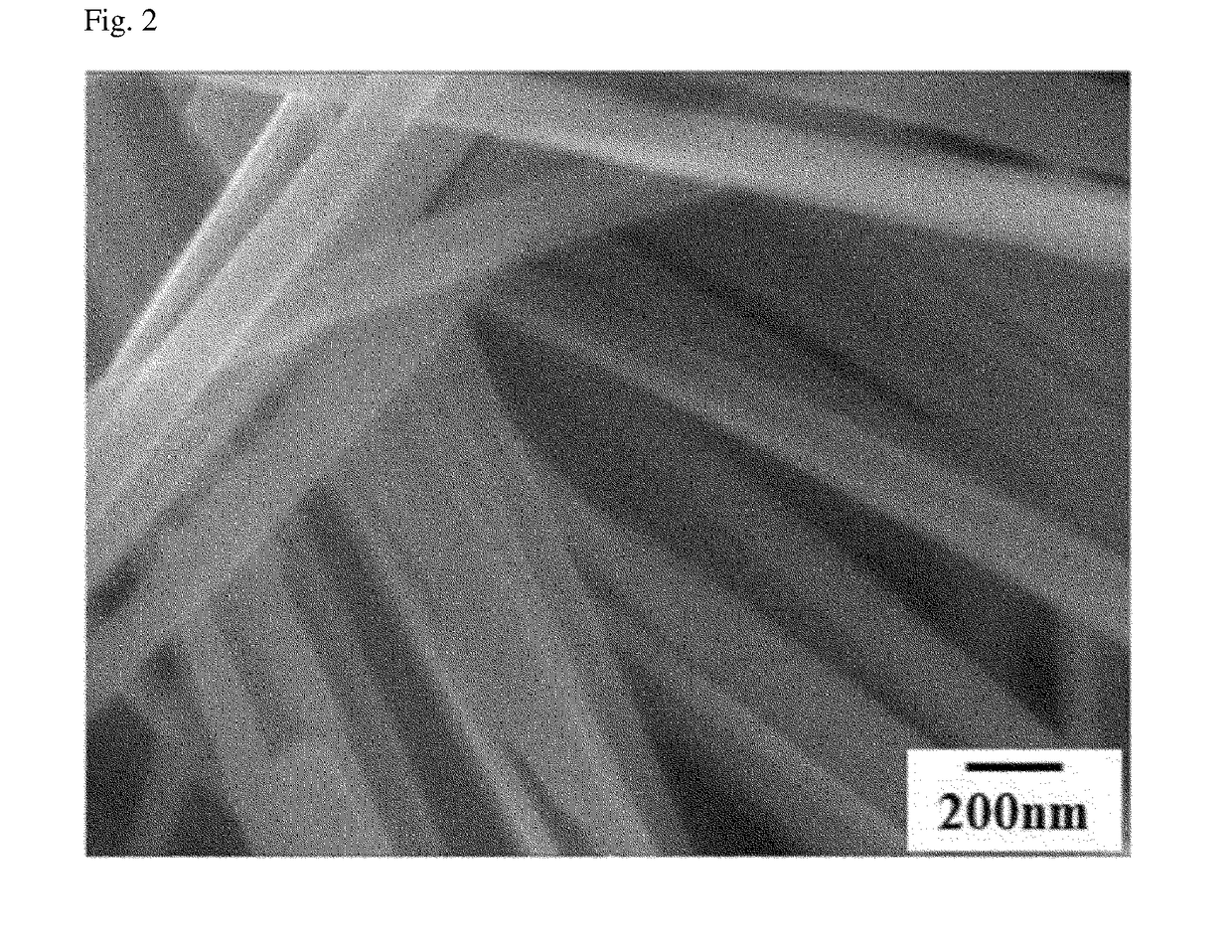Thermoelectric composite having a thermoelectric characteristic and method of preparing same
a thermoelectric characteristic and thermoelectric composite technology, applied in the field of thermoelectric composites, can solve the problems of low thermal conductivity, high conductivity, low thermal conductivity due to carbon nanotubes and polymer emulsions, etc., and achieve excellent thermoelectric characteristic, electrical conductivity and heat insulating properties as a composite, excellent thermal characteristic, excellent heat insulating properties
- Summary
- Abstract
- Description
- Claims
- Application Information
AI Technical Summary
Benefits of technology
Problems solved by technology
Method used
Image
Examples
Embodiment Construction
Technical Problem
[0010]The present invention is directed to providing a thermoelectric composite that includes a thermoplastic polymer matrix having a conductive pathway in which electroconductive materials exhibiting a thermoelectric characteristic are in direct contact with one another, is capable of attaining an optimum thermoelectric characteristic with a minimum amount of the electroconductive materials due to disposition of the electroconductive materials at grain boundaries, which are between thermoplastic polymer particles and are desired locations in the thermoplastic polymer matrix, and is capable of exhibiting an excellent thermoelectric characteristic, electrical conductivity, and heat insulating properties as a composite even with a small amount of electroconductive materials in the thermoplastic polymer matrix. In this case, the electroconductive materials having a thermoelectric characteristic in the thermoplastic polymer matrix do not restrict electron transfer, and ...
PUM
| Property | Measurement | Unit |
|---|---|---|
| thermal conductivity | aaaaa | aaaaa |
| size | aaaaa | aaaaa |
| pressure | aaaaa | aaaaa |
Abstract
Description
Claims
Application Information
 Login to View More
Login to View More - R&D
- Intellectual Property
- Life Sciences
- Materials
- Tech Scout
- Unparalleled Data Quality
- Higher Quality Content
- 60% Fewer Hallucinations
Browse by: Latest US Patents, China's latest patents, Technical Efficacy Thesaurus, Application Domain, Technology Topic, Popular Technical Reports.
© 2025 PatSnap. All rights reserved.Legal|Privacy policy|Modern Slavery Act Transparency Statement|Sitemap|About US| Contact US: help@patsnap.com



